Abby V
A smiling young man opens the door to a beautiful house and sings 10-12 second snippets of 73 Indian classical rAga-s in quick succession when prompted, effortlessly and instantaneously, whilst casually walking around the home. The camera follows him around, shooting without any cuts, for the entire ~14 minutes. Abby V’s 73 Ragas video received millions of views on social media after it was posted in late January last year.
Title Photograph courtesy Sri. Srini Venkat via Sri. Abby V.
Most of us might have heard of Abby V only then, but he has been singing, composing and recording music earlier and winning accolades too. He has won several prizes at the Cleveland Thyagaraja Aradhana and from Mumbai’s Shanmukhananda Sabha in multiple categories, including Best Senior Vocalist. He sings Pop, R&B, Hip-Hop, Bollywood and Kollywood film music, ghazals and qawwali in addition to Indian classical music. In 2019, he released a solo album, First of All, featuring 8 original songs in English, Hindi and Tamil. “I am all things pop culture. I am intrigued by everything consumed by the masses. I continue to follow these musics and am a fan of Chris Brown, Usher, Justin Timberlake….” Abby is a huge admirer of AR Rahman. “Successful combining of Indian classical aspects with Western concepts like chords and polyphonic arrangement results in magicians like him,” he says.
A version of this article appeared in The Hindu dated August 6th, 2021. All photographs and the music recordings on this page are courtesy Sri. Abby V. Sincere thanks to him.
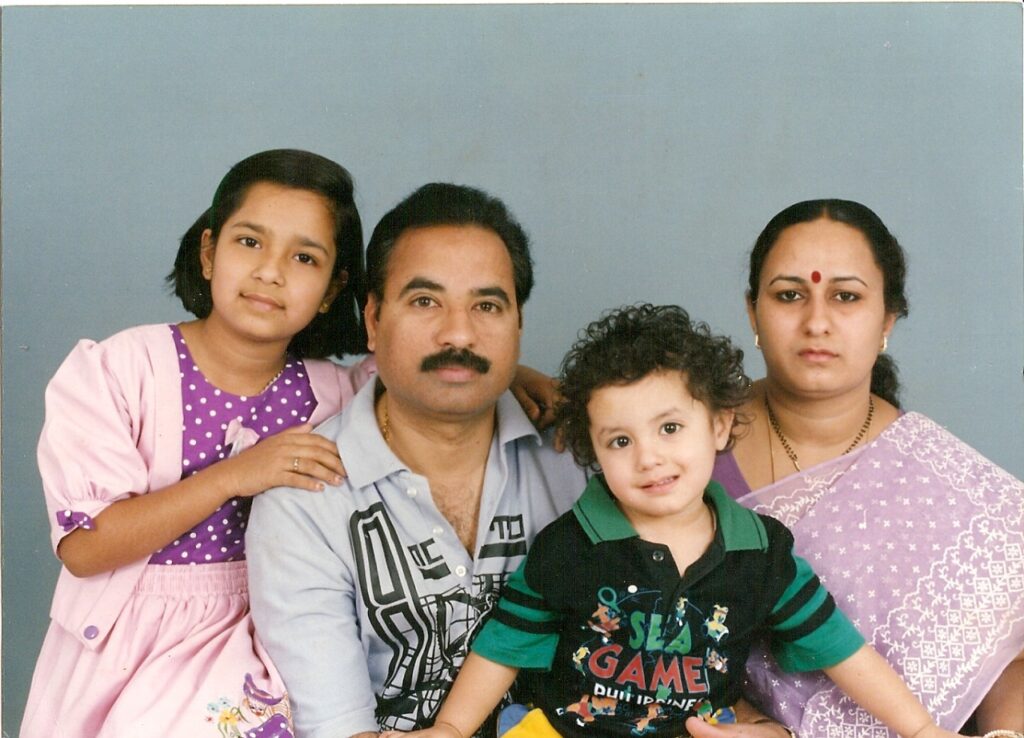
Born in India to South Indian parents, Abby Venkatachalam grew up almost entirely in Toronto, Canada, where he continues to live. His father, Venky Venkatachalam, employed in the suburban railways there, sang Hindi and Tamil film jingles as a hobby and was a regular part of bands in North America that performed these in the diaspora. As Abby rightly says, those were the days when not too many performers crossed the seas to ply their trade. Listening to some of the tracks where Abby performs with his dad, it is clear Venky Venkatachalam is a good singer himself intrinsically.
Initially, Abby would join his father as he sang even as Venkatachalam would get little Abby to relate Carnatic rAgam-s to film songs and vice versa, just for fun. This way, Abby was into music sans pressure or formal lessons for quite a while. “My father exposed and familiarised me to the old Hindi film music of Laxmikant Pyarelal, RD Burman, Ilaiyaraja, MS Viswanathan etc. I love Bollywood music and Rahman Sir has been one of the greatest influences,” says Abby. “I have grown up listening to him all my life.”
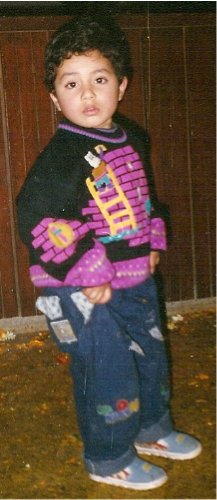
As a young child, though, Abby’s forays into Indian music were privy only to his family and members of the diaspora. He faced an issue common to immigrant children – being ‘different’ and fitting into a North American school system. “I hid my Indian music ventures from my classmates then – I wonder why now – it might have been a very cool thing – but at that time, I found it embarrassing,” he says with innocent candour.
As is typical of the children of Indian immigrants, Abby too was expected to study well and thought he would take up a regular 9-5 job. With absolutely no connections to the music industry, music as a career was not at all on the horizons. Abby went to the University of Toronto where he graduated with a degree in Finance and Management. Later, he obtained a full scholarship to the Metalworks Institute of Sound and Music Production where he did a degree in Music Performance and Technology.
Growing up, his was the life of a typical Indian-origin child growing up in North America. “The only difference was probably my spending a lot of time singing when I came back from school – to pop, R&B and doing karaoke with my dad on Indian film jingles. I also sang on stage with my dad from childhood. Since he was performing, I wanted to as well.” This allowed Abby to perform before even knowing what stage fear was. “I remember just being so happy to be a part of it and really enjoying it.” Abby adds that when a child that age sings, people are always very loving and accepting no matter how it is. “That made me think of public performance in a very positive and encouraging way.”
Venkatachalam would engage Abby in a just-for-fun exercise where he would sing the strain of a rAgam and ask Abby to identify a song he knew in it. And the reverse too. He also pointed out intricacies within them – as in the song Mere Naina Sawan Badhon from the Hindi movie Mehbooba where the rAgam Sivaranjani becomes Misra Sivaranjani in the caraNam through the addition of the antara gAndhAram. Abby attributes his fascination with the concept for rAgam-s to this unusual, but routine-for-him exercise.
Abby’s mother, Pushpa Venkatachalam, has been a huge source of encouragement for him. “She actually wants this for me even more than I want it for myself.” She accompanies him to every performance and is his biggest critic. “If she says something is good, I know it is.” Both Abby’s parents hail from Kerala and have Tamilian antecedents. He explains how, when he visits Chennai during the music season, his Tamil is often not understood locally (anymore than he understands what the others speak) since his exposure to the language has entirely been the Malayalised Tamil spoken at home. He is very fluent in Hindi which the family speaks quite often.
His formal training in Indian Classical Music began around age 12 with Carnatic and Hindustani classes in Toronto. “I must be honest – I really was not at all interested – the varisai-s and the kharaj sAdhana were just so boring, and I hardly registered anything inside.” It was even harder for Abby to abide by these since he was already doing performances, competitions and reality shows with ‘tangible’ music. Interestingly, it was certain pieces of film music that later sparked his interest in learning classical properly, so to speak. He mentions “Kuhu kuhu’ from the Hindi movie Suvarna Sundari and Paattum Naane from the Tamil movie Thiruvilaiyadal, where the fast tAn-s (akAram-s) and the highly classical aspects really spoke to him. At around that time, he heard vocalists Ranjani and Gayatri sing for the Margazhi Maha Utsavam on Jaya TV and, in his words, “was mesmerised.”

He began with relistening to that concert of the sisters’, beginning with the abhang and then the other pieces, trying to comprehend what exactly was being done musically. “By this time, I really got into heavy Carnatic and Hindustani khayal and listened non-stop to them.” He requested the sisters to take him on as his student and soon joined their tutelage. At that point, it was not about his ability to sing the songs at all, says Abby. Rather, it was just immense curiosity with the intricacies of the two classical styles. He remembers his first exposure to kalpanAswaram-s and the fascination with artistes creating on-the-spot patterns with notes. “I thought it was insanely cool. I went to my dad and asked him if he thought I would ever be able to do something like that because it seemed like rocket science.”
Though the family did visit India then, those trips did not involve music, taken up, as they were, with visiting relatives in various locations including Delhi, Mumbai and Kerala. Listening via the internet was his sole source of exposure. Though he had heard Indian classical music until then, it was only at around age 15-16 that he began registering its various facets – the rAgam, tALam, naDai, janya rAgam-s and more. He attributes acquiring comfort in manOdharmam to his other Guru, Raji Gopalakrishnan, who would visit Toronto for 3 months every year. He recollects his very first class with Raji when he told her he was fascinated by kalpanAswaram-s. She immediately taught him a kriti and encouraged him to attempt kalpanAswaram in it in the next class. “She made me feel there was nothing I could not do, which made me feel very empowered as a musician. I think there are two types of Guru-s – one that says you are not ready yet and the other that lets you try. Raji aunty’s latter approach really helped me. She got me started on neraval, tAnam, swaram-s – all of it.”
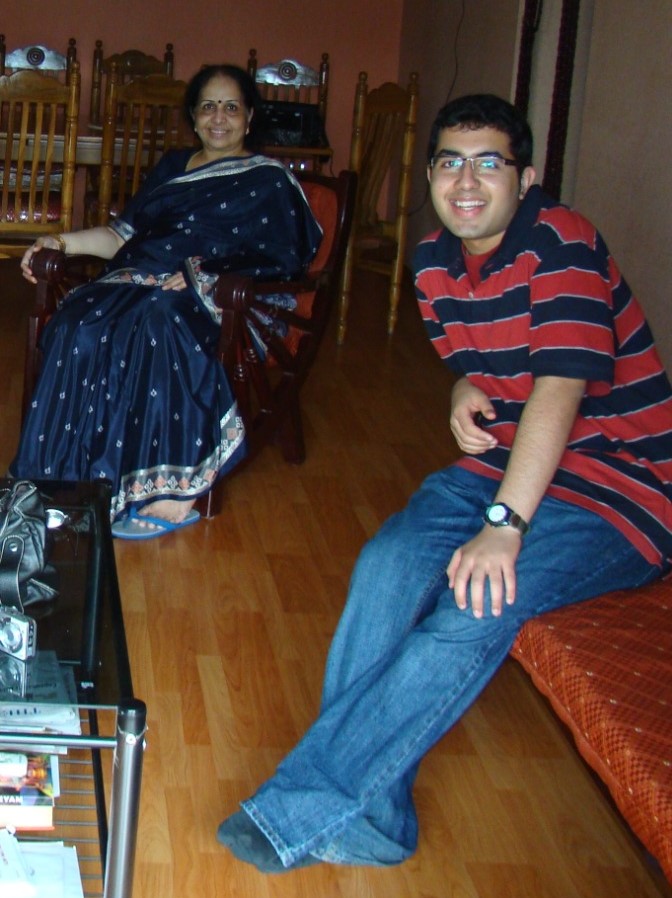
As long as he was in school, in-person classes with Ranjani and Gayatri were only every other year or so and only for short periods of time. Once he joined University, he began spending the 3-4 months of summer in Chennai taking lessons. In addition, he also visited the city during the December music season.
While he took some initial lessons in Hindustani, it was not something he formally undertook later. However, all his three Guru-s, having lived in Bombay for years, had a natural familiarity with Hindustani. “When Gayatri akka would teach me a rAgam, she would also tell me how it would be sung in Hindustani, for example.” Coupled with his experience of singing many Hindi film songs, Hindustani felt like an organic extension for him. He had always enjoyed it, he realised, based on his natural proclivity for the more classical sounding film songs that he would sing.
In 2016, Abby found himself in Mumbai after winning a reality TV music show in Malaysia. On a whim, he participated in the Shanmukhananda Sabha’s music competition. He participated in four categories – kalpanAswaram-s, rAgam tAnam pallavi, compositions of the trinity with neraval and swaram, and a full concert. Much to his surprise, he ended up winning first place in all of them including the tanpura prize. “Until then, I had only heard of the huge talent pool in India but had not had an opportunity to experience it.” It was a definite shot-in-the-arm for his confidence.
The way Abby throws the voice and handles the higher notes, in particular, indicates familiarity with Western voice training and sure enough, he explains that he did train in Western voice formally, even taking some exams and learning classical Latin and German compositions too.
In Carnatic music, one is usually told to sing full-throatedly and from the naabhi (navel) but not on how to maintain the voice for life. Voice specialists say that is often why many Indian classical musicians’ voices take a beating over time. Abby says that his Guru-s have mentioned that Carnatic in particular, is very taxing on the voice due to the nature of the gamakam-s in it. “After several years, we do see fatigue in many artistes’ voices.”
In Western music’s voice training, one is specifically taught how to avoid straining the voice, and to identify and use the chest, the nasal and the head voices. Abby says, “A huge part of my western training was how to use the three properly and how to bridge them.” He further explains that Indian Classical music uses preponderantly only the chest voice whereas in R&B and Pop music, all three voices are used, but not as much in India, particularly with male singers. “I think people just need to get used to that kind of sound.”
Using these voices and breath control were aspects that his Western training imparted well. He finds the breath control techniques very helpful in Carnatic. When he sings film songs and R&B, he uses the entire range of voices. The various warm-up techniques he learned in Western voice are very helpful in Indian classical too, he says. He mentions lip drills where the idea is to increase the blood circulation to the lip and mouth area. “KalpanAswaram-s are all consonants and I can see a clear difference in its clarity and enunciation at fast speeds based on whether I did these exercises that day or not.”
Abby says he could apply the Western training techniques unconsciously across genres because it had been inculcated from a very young age. He has had voice coaches whom he continues to consult. “Even if I were to sing an Indian song, they can just look at me and tell me what I am doing and what I should do differently – right from posture to where I am taking the breath from – am I taking it in just up to my throat or all the way to the abdomen, for example.” Abby gives a concrete Carnatic example here – of how many musicians would tilt their head back when singing the higher notes (from the chest register, of course). “That is probably the worst thing one can do whilst singing.” If one cannot look straight ahead (tilting downwards is fine too), it is advisable to not sing those notes at all, he says.
One breath control technique he was taught was singing the notes s g p m r n s (in SankarAbharaNam) back to back in successive Sruti-s without breathing in between – that, he says, immediately gives him a picture of the range he can reach and how far his breath can sustain. Another exercise he did was to record himself singing a note after inhaling alternately from the nose and then the mouth. “When you inhale through the mouth and let it right out, that is a different sound than when you inhale through the nose and then produce the sound.” The idea was to make the singer consciously aware of how each type of breathing sounded and what it felt like too. “The exhalation can also be done differently – it can be let out all at once, within ~3 seconds, or can be sustained for about 15 seconds.”
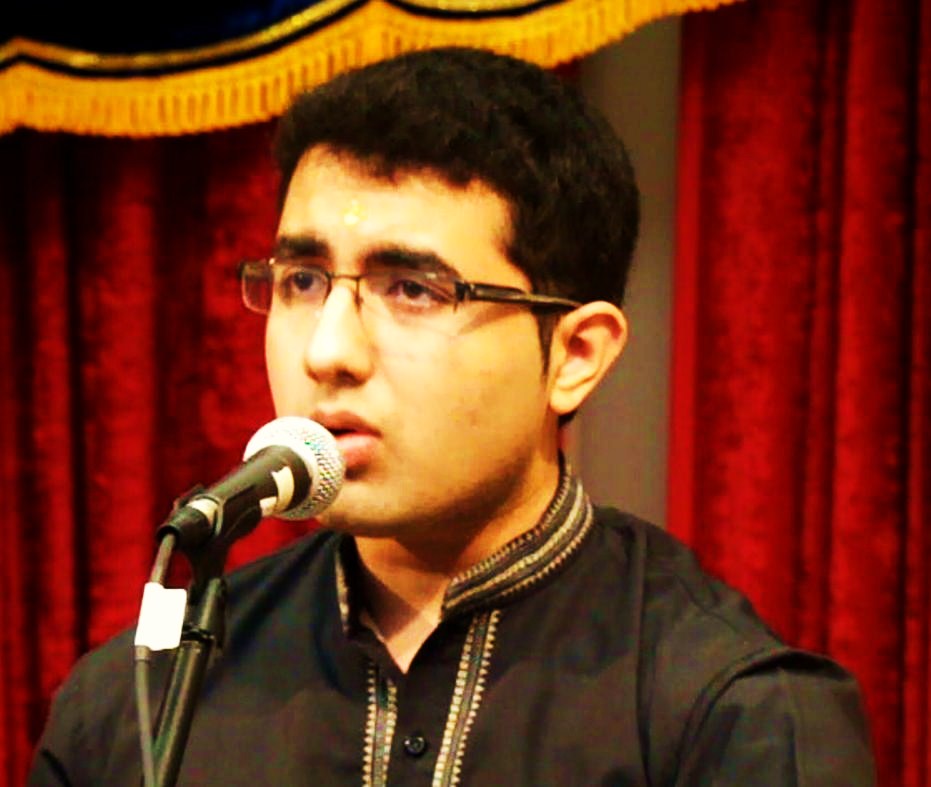
Abby struggled, as so many boys do, with the voice changing in his mid-teens. “That was when I was getting into all the different musics. I could not bring out the sounds I wanted to – I really felt caged.” He did a lot of kharaj sAdhana then which helped him a lot. “Trying to sustain the lower notes made a huge difference in how my voice began to sound.”
Abby says that he found many aspects of the Indian classical music flummoxing but chose not to look at them as struggles. Since much of his exposure came from audio recordings, tALam was a particular challenge – the concept of edam, kuraippu, naDai, gati etc. in Carnatic and similarly in Hindustani too. He looked up internet resources extensively for guidance but says these are best assimilated in face-to-face classes. Abby smilingly recollects an online class with his Guru-s where he was asked to do kuraippu at a particular edam – something he did not know then and was going to attempt for the very first time. He followed along purely based on what he heard but without understanding. “Maybe it sounded right and any deficiencies would have been attributed to connectivity quirks such as time lags.”
Abby has found synergies across genres. He says that the evolved tALam structure in Carnatic helps him even when he composes an English pop song. “In Western song writing theory, you have a system of verse and chorus and then a bridge. That bridge is a different type of segment and when I write that, I often do it in a different rAga or naDai, for example.” He also mentally notates all the pieces he hears, sings or composes and demonstrates by notating a strain from a Justin Bieber number. It is an instinctive tendency stemming from the Indian classical training, he says. “While we have Do Re Mi for sight reading in western music, it is not actually used in the compositional aspects,” he explains. Sometimes, when he composes Western pieces, he incorporates an ‘alien’ note, taking inspiration from bhASAnga rAgam-s.
Knowledge of playing an instrument helps with notation and Abby did learn the piano and the guitar a little, but he feels he acquired the ability to notate by sheer practice. Another student of his Guru-s’, Vani Ramamurthi, would notate very well and he learned the art from her. Soon, it just became instinctive, he says. “I am frequently asked how I can switch between rAgam-s so quickly – I think it is because I can picture them instantly as swaram-s and think of the key prayOgam-s of the rAgam.” Since he had only minimal in person time with his Guru-s, he learned a lot of songs from recordings for which he would write the lyrics and the notation too, along with it. Abby says that a lot of his training has been more through listening to the sisters’ concerts, what they say in interviews and so on, rather than through classes, as they were not too frequent.
Regarding 73 Ragas, the video that made him a household name among South Asian music aficionados, he says he derived inspiration from Vogue’s 73 Questions where celebrities are asked questions back-to-back on camera, all filmed in one uncut shot. “I wanted to do a similar thing with rAga-s and with both Hindustani and Carnatic – not just the one.” He waited to do it until he felt he was somewhat good at the music. He wrote down a set of rAgam-s and gave the list to his brother-in-law who read it out for him. He clipped on a microphone which recorded the audio while his friend, and Toronto-based cinematographer, Karan Sheemar, filmed him as he walked around the well-appointed home (of a friend) singing rAgam after rAgam, some in swaram-s, some in akAram and an occasional stanza or two. “No effects were given or added. I sang it live, as it was recorded, in one single shot – just like the Vogue videos. All we did was sync the audio (which was recorded through the clip-on mic) to the video.”
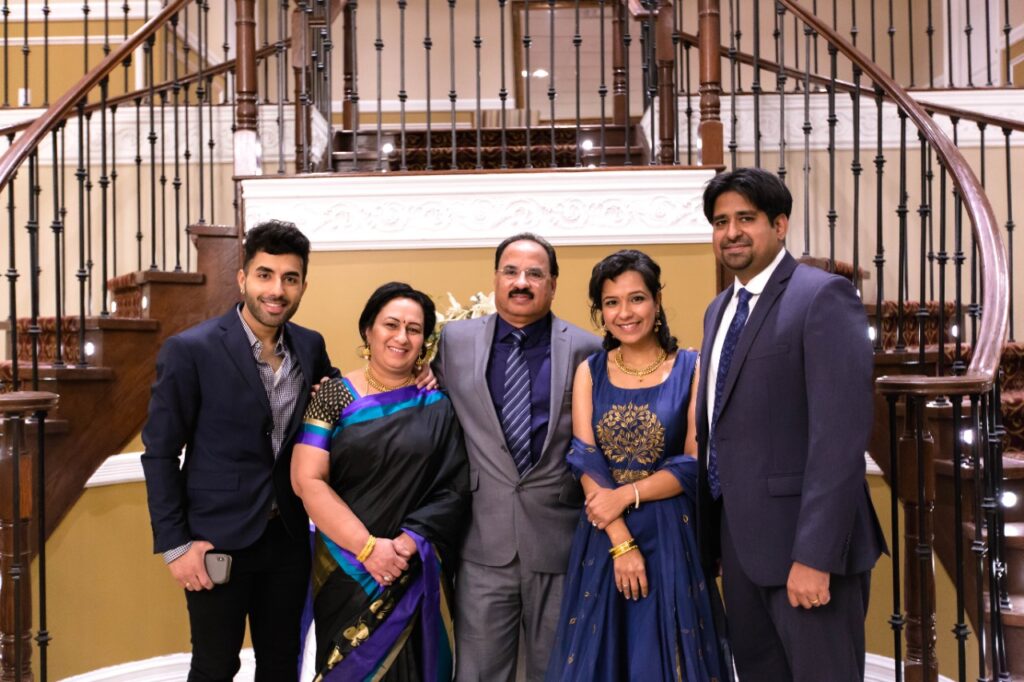
“Since I release a lot of videos now, folks might not realise it, but I was very insecure about putting myself out in public like that. With live programs, it gets over and done within a short duration. On the internet, it is always there. Permanently. I am not nervous about live programs but I was nervous about this video. I had worries about how I sounded and how I looked. You don’t know what the response is going to be, how people will react, what the comments are going to be like – classical music packaged in a different way. My family thought it would come to nought – it was a long video and unlike the real Vogue ones which featured celebrities, I was a nobody.”
Abby appears natural and comfortable in front of the camera, with an easy smile, a casual air and few unpleasant facial contortions. Abby says that since he has regularly performed from a young age, he has been aware of how he might be perceived – how he appears, how he dresses etc. And that he does think of how his face looks when he sings.
Abby says he feels a special connection to the concept of rAgam-s. “When you mention a rAga, it is not only the sound that comes to mind – it is imagery, colours, thoughts. GaurimanOhari, for example, reminds me of baby blue. rAga-s are like friends and just as we don’t forget friends, I do not forget rAga-s.” He says the rAgam-s in 73 Ragas were some he knew very well and was familiar with.
“A Professor at University would say that explaining what we know within a couple of minutes, such that even a child can understand it, is what reflects true understanding. Similarly, I wanted to try and show the essence of each rAga in a few seconds.”
– Abby V
Abby was unprepared for how popular the video became and the response he received not just from the general public but also leading musicians. “We did not even do a proper thumbnail for the video – it was just a screenshot from the video itself and we just put Vogue on it. I put it up one evening and within minutes, I saw views going steadily up. That so many outside my circle were watching it was remarkable. The singer Srinivas Sir was among the first to respond. Musicians I have looked up to, such as S.P. Balasubrahmanyam Sir, and many other leading senior musicians, reached out to me themselves after viewing this video. It went beyond the classical world – so many from the film and pop industries too contacted me – and all this on the very first day.”
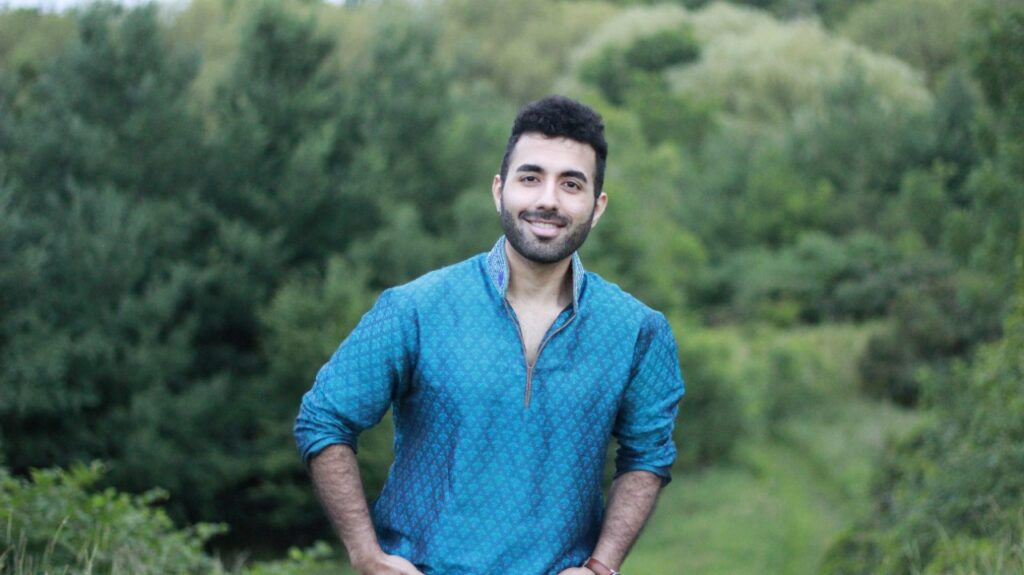
The next morning, he realised it had gone viral, particularly on WhatsApp. “I heard from several friends that they had received this video as forwards on multiple groups. The teams of so many musicians, whom I looked up to, got in touch with me. It made me feel I was accepted in the online space of music.” His YouTube channel went from 14 subscribers to over a 100,000. He got bookings for many recordings, tours and projects which, unfortunately, were all brought to a standstill due to the pandemic. “I have felt so much love from the community. I have had the opportunity to collaborate with so many singers around India, panel discussions with senior artistes like Sudha-ji (Sudha Ragunathan) and Kaushiki-ji (Kaushiki Chakraborty) – I never dreamt any of this was possible.”
On the topic of how this translates into revenue, Abby explains that income comes mainly from shows, which, currently, are mostly virtual. So, YouTube and social media are beneficial indirectly, acting as channels of marketing. He says YouTube, Facebook and TikTok can be monetised and one can get royalties on songs and albums. Artiste merchandise is yet another avenue of potential revenue but one he personally is yet to explore.
“Long gone are the days when only those at the top could make money. I think we can all co-exist and earn. For some, it might take longer than others to get recognition but if an artiste puts in time and investment, it will reap fruit eventually.”
Abby says he initially received comments that he ought to box himself into a particular genre. “However, I love all the genres I sing and do not wish to restrict myself to a single one. I thoroughly enjoy what I am doing. I am really open to feedback though, critical feedback too.”
The main pressure he feels is to consistently put out content. “I have acquired this audience online which is not because of a show or a program and I acknowledge and accept the pressure to keep creating content for the digital space. Now, due to the pandemic, it makes it more difficult since one cannot go to different places and shoot in varying locales.”
His training at Metalworks allows him to be self-sufficient in producing and recording his own music. He does not have a sophisticated set up at home – effectively just a mic, a laptop and a camera. All the music that accompanies his videos, except for the acapella ones, are all made by him, he says, to best suit his vision of the piece and his voice.
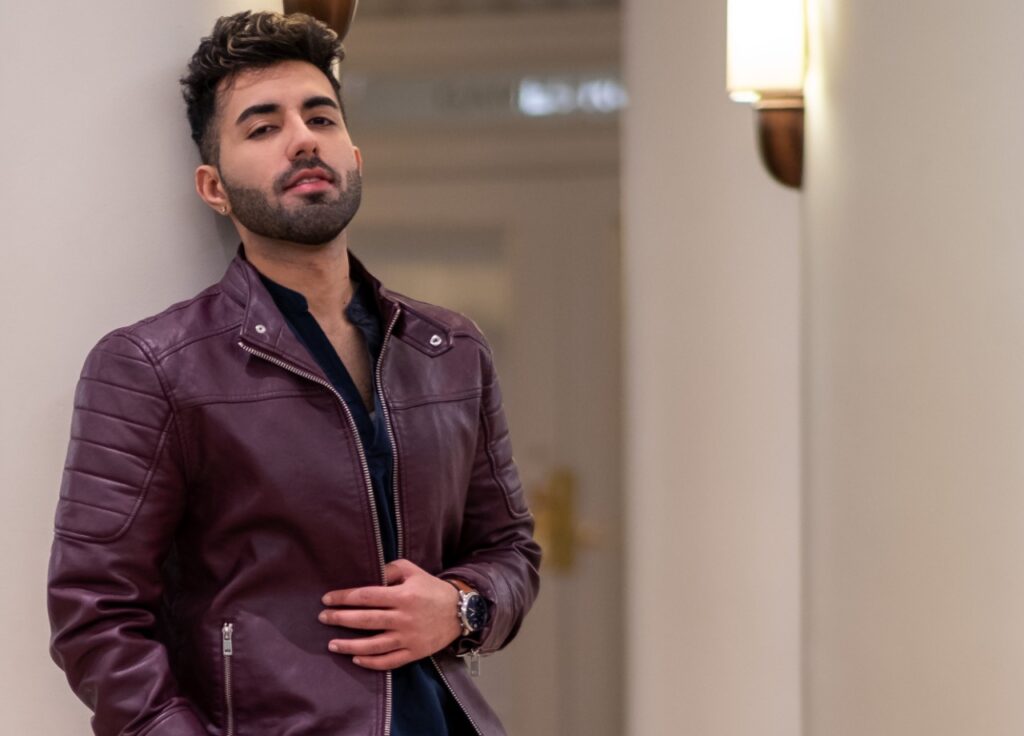
Besides music, Abby evinces interest in acting, specifically theatre, something he did a little bit earlier in school. “How actors use their eyes, the role that the eyebrows play, how actors use their hands – they intrigue me. When I watch performances, I think of myself as a critic and observe with that hat on.”
Abby V is in a happy place. “I am looking forward to visiting India soon and interacting with the musicians and others who have reached out to me. I feel I have so many more friends now – such a loyal community. I like interacting with them a lot. My family has grown.”
Copyright: If sharing any content here, in full or in part, please do so only verbatim by either linking directly to this page and/or clearly attributing credit to LakshmiAnand.com. All content on this page, and on this website, is copyrighted. Sharing or disseminating without attributing credit is not allowed.
Incredible write up. Enjoyed reading every bit, Lakshmi! As usual, you brought out the human in the musician. Thanks so much!
Very kind of you, Dr. Shivakumar. Thank you so much for sharing your thoughts.
Fortunately as a listener of an interview with Abby V for the second time since the cut off effect by the pandemic, i find in this podcast , the attempt was made in full throttle to in clubbing the results from just the Carnatic music. The Hindustani fabric goes parallel in Abby’s weaving of music. Glad, instead of people following only seasoned carnstic singers for ages, and finding pleasure only on the set Krithis, more Abbys have were able to extend the scope of Classical music to the needs of the current trend. Fortunately for Abby , everything fell nicely in places… giving new shape to the existing tradition. A young boy has opened the doors for the future children to further think on their own and create new ragas as the young man was able to master the 73 ragas.
Thank you, Sir, for your continued support.
Lakshmi! Can’t believe you interviewed one of my faves. Beautiful write up
Thank you for reading, Sharmila.
Brilliant narrative on Abby whose music is truly mesmerizing and deep, replete with a feel from within, almost divine. Is there a possibility of hosting a fund raiser for our charitable foundation? We are working to set up an advanced neuro rehab centre in Delhi NCR and aim at building a corpus of Rs. 20 crores. We are a very small team and passionate. Thanks
I have sent you an email, Ma’am. Thank you for writing.
Brilliant narrative of the most talented singer in these times!
Thank you for reading!
Thank you for giving an insight on the life and talent of this brilliant Abby V. I was mesmerised by his 73 ragas and then duets.
Thank you for reading and for taking the trouble to comment!
Am in Toronto with my husband and would love to meet this youngster and listen to him or attend a concert
Please let me know how can I can contact him or his patents. Many thanks
You could reach out to him on one of his social media handles.
I am intrigued by Abby V which is what brought me to this page. I not only got to know Abby V but I found out how brilliant you are Lakshmi. I am blown away by your exemplary writing..
You are very kind. Thank you for writing in.
Such an insightful article. Very well-written. Love the way you have brought out the human in the musician. I am a great admirer of this young man and his amazing talent. God bless.
Thank you for the kind words, Ma’am.
If Abby’s voice shook up the nerves in ones body, Lakshmi you words woke up the soul when reading this article. Very informative, very captivating, a write up that I will pass on to my son an aspiring singer!
You are most kind. Thank you for reading, writing and passing it on.